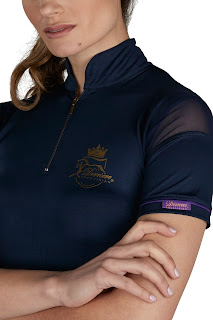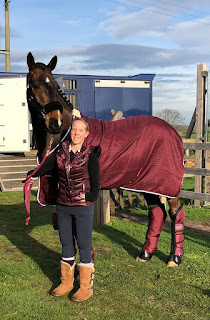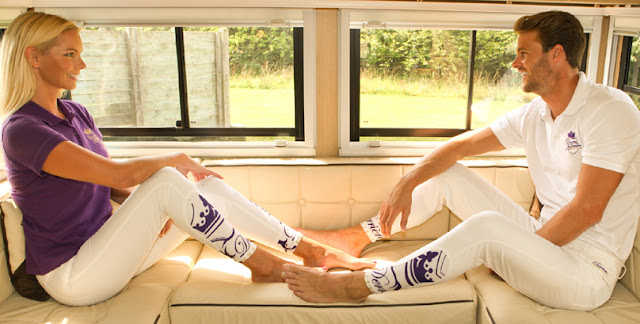Why our hybrid sports bra, the Sportief, is the go-to bra for comfort and performance when riding
A recent study on breast support during exercise (ref 1) has found that poor bra fit is unfortunately common, with approximately 85% of women reported to be wearing ill-fitting bras. This has been attributed to three primary factors: a lack of knowledge among women regarding both the need for proper breast support during physical activity and how a bra should fit; poor standardisation of bra sizing by many bra manufacturers; and inadequate bra designs. (With our beautiful Sportief bra, we are hopefully alleviating such issues! We’re helping to spread the word about the need for proper breast support, have a comprehensive range of sizes with clear size guides, and have created what we believe to be the ultimate sports bra. The Sportief is a fashion-focussed product that ticks every functional sports bra box as well, for the ultimate in comfort and support, when riding).
 |
Jog on
Demand for sport-specific bras began in the 1970s, after the United States introduced legislation that prohibited sexual discrimination in sport; sports medicine research followed, which identified that breast pain during exercise could be very problematic for women, and could impede their sporting prowess. The first bra designed specifically to support a woman's breasts during running is thought to have been developed in 1977, when a costume designer sewed two jock straps (very supportive male groin protection garments!) together for an avid female runner, to form the prototype ‘Jogbra’ (Ref 2).
Since the earliest
research investigating breast motion, numerous biomechanical studies have
confirmed that running and jumping (research that also translates well to horse
riding, with its vertical forces when trotting) results in such degrees of
breast movement that a female’s ability to move her upper limbs and flex her
torso can be affected, if external breast support is not worn.
Unhappy-slappy
The total amount of breast movement during physical activity is a combination of how much the breasts are ‘displaced’ and the number of times they bounce. (The wince-inducing term ‘breast slap’ is often used.) Most sports bras have traditionally been designed to minimise the amount of breast displacement via compression (effectively compressing them down), or encapsulation (encasing each breast in a separate, structured cup.)
However,
sports bras that reduce breast displacement purely via compression have been
perceived to be the most uncomfortable to wear. Encapsulation bras are often
not the most attractive. Hence, hybrid bras like our Sportief have been
developed, to offer both benefits.
Sports
bras for horse riding
Rather than just minimising breast displacement, well-designed hybrid sports bras like ours can reduce exercise-induced breast discomfort by simultaneously elevating and compressing the breasts. Elevating the breasts can reduce tension and loading of the anatomical breast support structures, the overlying skin, and also the Cooper's ligaments. A compressive element decreases what’s called ‘flexion torque’, the lateral and rotational movement generated by the breasts. (Just take sitting trot without an adequate sports bra, and you will fully understand the term!)
The DerriereEquestrian Sportief bra for riding has a racer back, padded support, and a clever front opening, offering breast compression as well as a shaping and an encapsulation effect, for more of a ‘comfort’ fit. This bra is so attractive, you can easily wear it at the gym or exercise class, and feel confident as well as supported. The material and structure in the Sportief cupping system seam is designed to lift, separate, shape and support the breasts, which in turn leaves the rider’s shoulders and upper back more comfortable and in a healthier, ‘open’ posture, as opposed to more ‘closed’ and protective. It’s the perfect garment to take your mind of your ‘breast bounce’, and concentrate on your riding.
To summarise,
the Sportief sports bra is designed to provide additional support during horse
riding and exercise, minimise breast movement, alleviate discomfort and reduce
potential chest ligament damage. It comes in seven bra sizes, which covers
fourteen to eighteen common bra specifications. We are sure you will not look
back once you have tried it! It’s a garment we’re super proud of, and our
customer feedback corroborates this.
Visit derriereequestrian.com to check out the Sportief sports bra
from Derriere Equestrian.
Ref 1 -
Biomechanics of Breast Support for Active Women; McGhee, Deirdre E.; Steele,
Julie R.Exercise and Sport Sciences Reviews: July 2020 - Volume 48 - Issue 3 -
p 99-109.
Ref 2 - Schuster K. Equipment update: jogging bras hit the streets. Phys. Sportsmed. 1979; 7(4):125–8.





























